Recommendation points
- What kind of editing do you prefer
- Frame system device
- Frameless installation – pasting walls with panels
- Corners and mates – we use a full range of fittings
- Installation of skirting boards
MDF panels for wall decoration are not only easy to install, but also very practical to use. MDF panels for dry wall cladding are still as popular as they were two decades ago. We have prepared for you instructions on how to properly decorate walls with MDF panels with your own hands.
What kind of editing do you prefer
In general, it is recommended to fix the wall cladding to a galvanized or timber profile system. This avoids preliminary leveling of the wall surface and makes it possible to lay up to 50–70 mm of internal insulation or sound insulation. The choice between a wooden and a metal frame is determined by the specifics and conditions in the room, as well as for finishing the gypsum board. In the modern variation of this installation, profiles and rails can be replaced or supplemented with plastic mounting strips, which provide for quick and easy installation with snap brackets.
A special case of the frame system is the device of a solid base as a rough preparation of the walls. The method is relevant in the case of using thin (5–6 mm) panels in rooms with high operational loads. In the presence of a sufficiently rigid substrate (OSB 6 mm, gypsum board), the panels will not be pressed through, besides, their warpage is guaranteed to be excluded during changes in humidity – a typical disease of cheap products. At the same time, the wall receives additional insulation and remains blown.
Sheathing without a frame is carried out by gluing the panels to the walls after their preliminary leveling. This can be gypsum plaster, cement plaster, or a rough base from the method described above. The method is recommended for mounting panels with a width of over 160 mm, fastening along the entire plane gives a plus to the durability of the coating, but excludes fragmentary repair and disassembly of the skin.
Frame system device
The principle of constructing a frame for finishing with panels is the same as for gypsum boards, but the installation scheme for profiles is completely different. Depending on the method of fixing the panels, the configuration may vary.
In the most typical version, the panels are attached directly to the profile, respectively, the direction of the rack elements will be horizontal, this is the main difference from the GKL system. Remote cladding allows you to give the room the correct geometry, but for this you must follow the correct assembly sequence.
Start with long walls: fix the vertical sections of the 28 mm UD rail in the corners. The two planes of the frame must be strictly parallel, so that the wall sheathed first is taken as the base one. In the future, the distance for mounting profiles on the opposite wall will be postponed from it..
Insert pieces of 60 mm CD post profile between the guides. With a horizontal layout, you are likely to face a lack of length of the molding. In these cases, the crossbeams can be spliced by inserting two sections of the guide profile inside and additionally reinforcing with LM screws. Since the linearity of the frame is not critical, it is also not forbidden to fold the profiles with an overlap of 30 cm and fasten their adjacent shelves with self-tapping screws..
The installation step of the CD profile is 35–40 cm, the outer ones are installed 10 cm from the floor and ceiling. To support the frame in a checkerboard pattern, straight hangers are mounted with a step in one row of 60-80 cm, depending on the thickness of the panels, and therefore the total weight of the cladding.
Installation of the frame on short walls is carried out in exactly the same way, except that the guides are not attached to the pillar, but to the frame profiles of the long walls. For this reason, the first “pawns” should be installed no further than 10 cm from the corners to solidify them..
If you intend to use PVC mounting strips or conduct a rough preparation of the walls, the frame is made exactly as for the plasterboard sheathing. The distance between the CD racks can vary from 60 to 80 cm, direct hangers are installed after 80 cm. Such a frame can be reused at the next repair with the replacement of the finishing material with a clean gypsum board, while it is not allowed to attach heavy sheet materials to horizontal beams.
The installation of panels to the frame itself is extremely simple; for this, special plate brackets are used. They are inserted into the groove of the hidden fastening and are fixed to the frame with a self-tapping screw with a hat for a sweat. With the use of PVC mounting strips, the situation is even simpler: just snap the clips into the mounting groove and press the panel next. Rigid fastening of panels with self-tapping screws is performed only for the first and outer strip.
Frameless installation – pasting walls with panels
There is also an alternative method of installation, which involves the use of glue “liquid nails”. The panels can be glued both to the frame and directly on the walls, if the irregularities on them do not exceed 2 mm / m. Often this method is chosen for cladding unrefined brick or block masonry, it is only important to choose the right glue composition.
It is recommended to use quality products. The glue should remain plastic after drying, give preference to compounds based on rubber or polyurethane. For occasionally heated summer cottages, frost-resistant glue should be chosen, other features are determined by the material of the surface for pasting.
Do not forget about the correct preparation of the walls. Masonry and plaster should be thoroughly impregnated with primers to increase adhesion..
Corners and mates – we use a full range of fittings
The main charm of working with MDF panels is that the fittings for cashing corner joints are mounted superficially, that is, upon completion of the cladding installation. The use of plastic fittings with grooves for PVC panels is highly discouraged. The trimming of the panels should be performed accurately enough, the gaps in the inner corners should not exceed 1.5–2 mm / linear. m, which is quite enough to compensate for thermal expansion.
The main element of the fittings is a universal corner profile. It consists of two thin MDF strips, fastened with laminated film, and can be used to decorate both internal and external corners. For correct and beautiful mixing of the overlays at the corners, their edges are cut in the miter box at 45 ° with a general bevel outward. When finishing corners on slopes, the angle will not be correct, so on-site trimming is recommended. Installation is carried out on glue for wood products based on polyvinyl concentrate.
Another piece of hardware is a docking bar. It is used for splicing cladding sections with insufficient molding lengths or for combining panels of different colors in one plane. In the place of installation of the connecting element, a mortgage rail should be provided.
Installation of skirting boards
Skirting boards for MDF panels stand out separately. For the most part, they are used to cover corners between the wall and ceiling, or to decorate the top end of wall panels. The plinth is installed in the same way as other fillets, the landing is carried out on transparent silicate glue.
The issue of fixing the floor plinth remained unresolved. There will be no particular problems if the lower frame guide is lowered to 10-15 mm from the floor. In the presence of a rough base or pasting with wall panels, fastening can also be carried out using standard means. It is common practice to chemically attach skirting boards to liquid nails: the front surface of the panels has excellent adhesion..

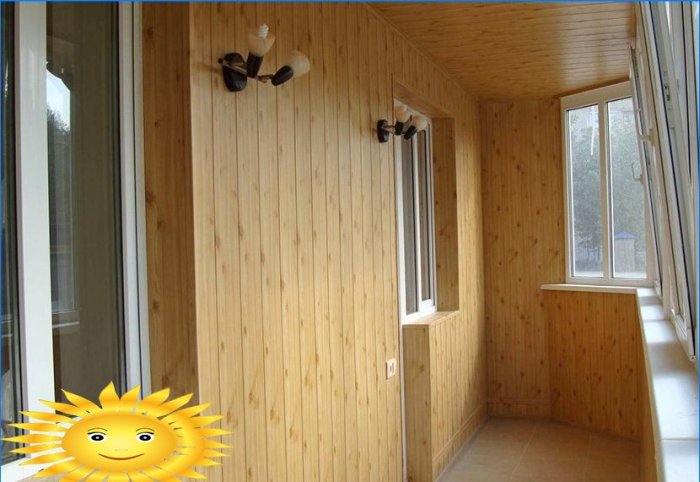
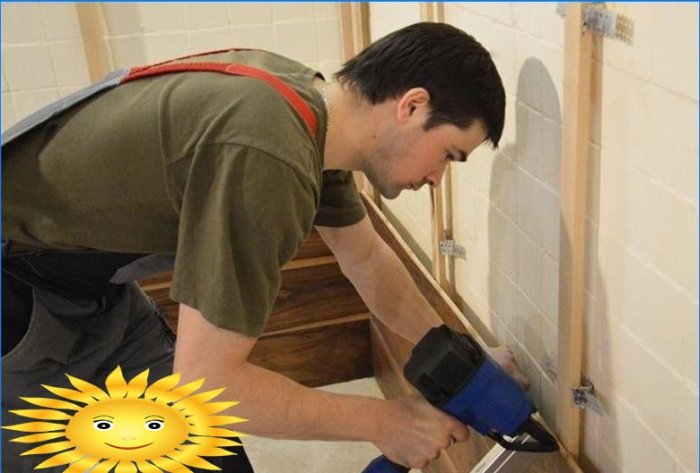

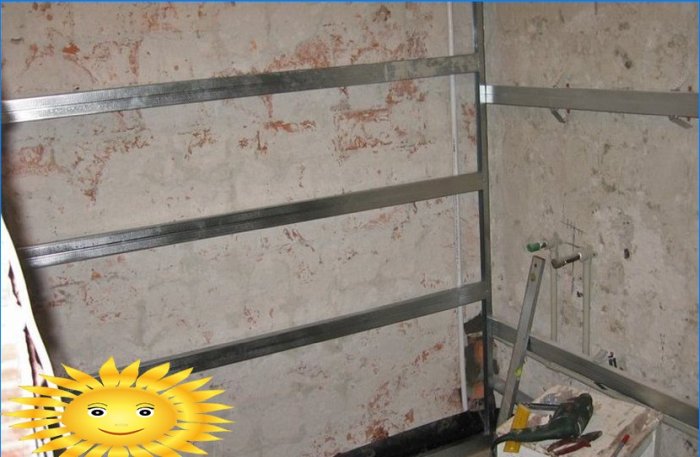
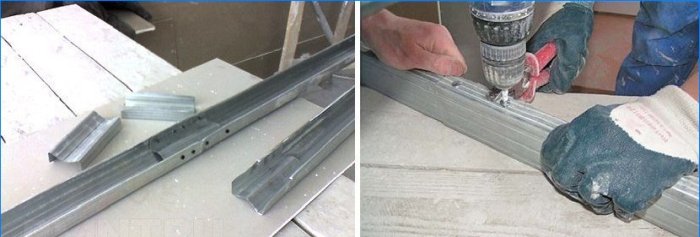




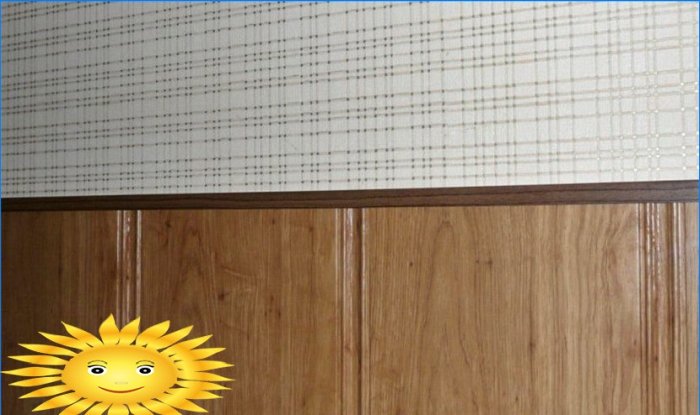
What are some creative and easy ways to utilize MDF panels for DIY wall decoration? Are there any specific tools or techniques I should know about to achieve the desired outcome? Any recommendations for paints or finishes that work best on MDF? Any design ideas or inspiration for incorporating MDF panels into my home decor? Appreciate any advice or tips from experienced DIYers!